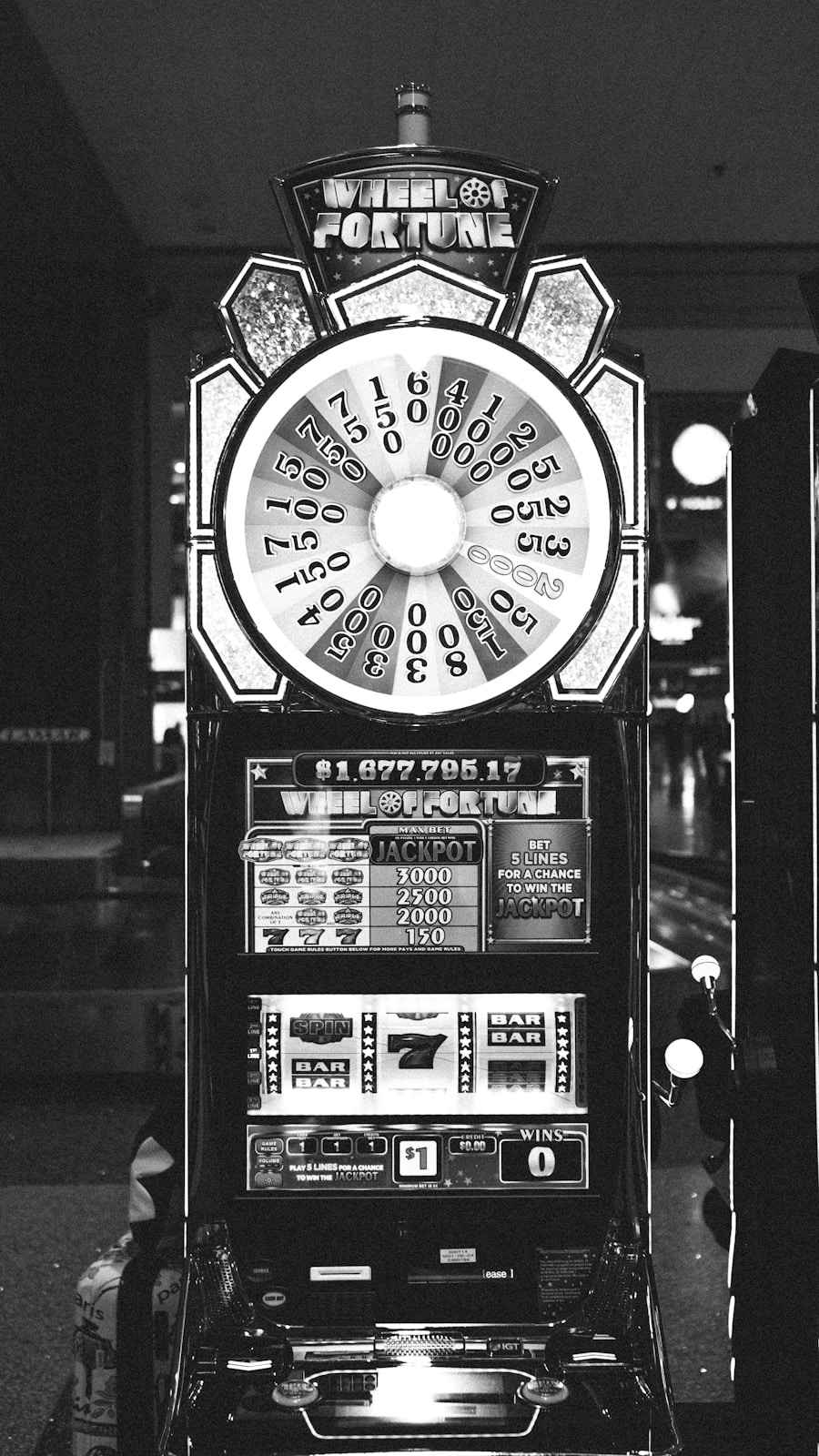Unlocking the Secrets of the Slot Machine
Description
The origins of slot machines can be traced back to the late 19th century, specifically to 1887 when Charles Fey, a mechanic from San Francisco, invented the first true slot machine known as the Liberty Bell. This machine featured three spinning reels adorned with symbols such as horseshoes, diamonds, and the iconic Liberty Bell. Players would insert a nickel and pull a lever to set the reels in motion.
If the reels aligned to show three Liberty Bells, the player would win a jackpot of $50, a significant sum at the time. Fey’s invention quickly gained popularity in saloons and gambling establishments across the United States, marking the beginning of a new era in gaming. As the popularity of slot machines grew, so did their design and functionality.
By the early 1900s, various manufacturers began producing their own versions of slot machines, leading to a proliferation of styles and themes. The introduction of electromechanical machines in the 1960s revolutionized the industry, allowing for more complex gameplay and the incorporation of lights and sounds that enhanced the player experience. The first fully electromechanical slot machine, known as Money Honey, was released by Bally Technologies in 1963.
This machine featured a bottomless hopper and automatic payouts, which eliminated the need for an attendant to pay out winnings manually. The combination of technology and design innovation set the stage for the modern slot machines we see today.
Key Takeaways
- Slot machines were first invented in the late 19th century and have evolved significantly since then.
- Slot machines work by using a random number generator to determine the outcome of each spin.
- The psychology of slot machines is designed to keep players engaged and coming back for more.
- Strategies for playing slot machines include setting a budget, knowing when to walk away, and understanding the odds.
- The evolution of slot machines has seen the introduction of video slots, progressive jackpots, and online versions.
- Responsible gambling with slot machines involves setting limits, taking breaks, and seeking help if needed.
How Slot Machines Work
At their core, slot machines operate on a simple principle: players insert money or credits, spin the reels, and hope for a winning combination of symbols. However, the mechanics behind this seemingly straightforward process are quite intricate. Modern slot machines utilize Random Number Generators (RNGs) to determine the outcome of each spin.
An RNG is a computer program that generates thousands of random numbers per second, even when the machine is not in use. When a player presses the spin button or pulls the lever, the RNG selects a number that corresponds to a specific combination of symbols on the reels. The symbols on the reels are arranged in a way that creates various winning combinations, each with its own payout value.
For instance, three matching symbols on a payline may yield a small payout, while a rare combination could trigger a larger jackpot. The odds of hitting these combinations are determined by the machine’s design and programming. Slot machines are typically programmed with a Return to Player (RTP) percentage, which indicates how much of the total money wagered will be returned to players over time.
For example, a machine with an RTP of 95% will return $95 for every $100 wagered in the long run.
The Psychology of Slot Machines

The allure of slot machines extends beyond mere chance; it taps into various psychological principles that keep players engaged and returning for more. One significant factor is the concept of intermittent reinforcement, which refers to the unpredictable nature of rewards. Unlike games where players can strategize or influence outcomes, slot machines provide sporadic payouts that create excitement and anticipation.
This unpredictability can lead to what psychologists call “the near-miss effect,” where players feel they were close to winning and are motivated to continue playing in hopes of achieving that elusive jackpot. Additionally, slot machines are designed with sensory elements that enhance the gaming experience. The sounds of spinning reels, celebratory jingles upon winning, and vibrant graphics all contribute to an immersive environment that stimulates players’ senses.
This sensory overload can create a euphoric state known as “the zone,” where players lose track of time and money spent. The use of bright lights and engaging themes also plays a crucial role in attracting players; many modern machines feature popular culture references or immersive storylines that resonate with players on an emotional level.
Strategies for Playing Slot Machines
| Strategy | Success Rate |
|---|---|
| Playing with a budget | 70% |
| Choosing machines with high RTP | 65% |
| Playing at off-peak times | 60% |
| Using player’s club rewards | 55% |
| Setting win and loss limits | 75% |
While slot machines are primarily games of chance, some players believe that employing specific strategies can enhance their gaming experience or improve their odds of winning. One common approach is bankroll management, which involves setting limits on how much money one is willing to spend during a gaming session. By establishing a budget beforehand and sticking to it, players can enjoy their time without risking financial distress.
Another strategy involves choosing machines with higher RTP percentages. Players can often find this information displayed on the machine or through online resources. Opting for machines with an RTP above 95% may increase the likelihood of receiving returns over time.
Additionally, some players prefer to play progressive jackpot machines, which offer larger potential payouts but often come with lower RTPs. Understanding these trade-offs is essential for making informed decisions while playing. Moreover, players should consider varying their bet sizes based on their bankroll and desired risk level.
Some experts suggest starting with smaller bets to extend gameplay and increase chances of hitting winning combinations over time.
Ultimately, while no strategy guarantees success at slot machines, being mindful of one’s approach can lead to a more enjoyable experience.
The Evolution of Slot Machines
The evolution of slot machines has been marked by significant technological advancements and changing player preferences over the decades. After the introduction of electromechanical machines in the 1960s, video slots emerged in the late 1970s and early 1980s. These machines replaced traditional reels with video screens that allowed for more complex graphics and animations.
The first video slot machine was developed by Fortune Coin Company in 1976 and featured a 19-inch screen displaying animated reels. As technology continued to advance, online casinos began to emerge in the late 1990s, further transforming how players interacted with slot machines. Online slots offered convenience and accessibility, allowing players to enjoy their favorite games from home or on mobile devices.
This shift led to an explosion in game variety, with developers creating themed slots based on movies, television shows, and even popular music artists. The integration of gamification elements such as bonus rounds, free spins, and interactive features has made online slots increasingly engaging. In recent years, the rise of virtual reality (VR) technology has begun to influence the future of slot machines.
VR slots offer an immersive experience that transports players into virtual casinos where they can interact with their environment in ways previously unimaginable. This evolution reflects a broader trend within the gaming industry toward creating more engaging and interactive experiences for players.
Responsible Gambling with Slot Machines

As entertaining as slot machines can be, it is crucial for players to engage in responsible gambling practices to mitigate potential risks associated with excessive play. One fundamental aspect of responsible gambling is self-awareness; players should recognize their limits and understand when it is time to take a break or walk away from the machine. Setting time limits for gaming sessions can help maintain control over one’s gambling habits.
Many casinos and online platforms offer tools designed to promote responsible gambling. These may include options for setting deposit limits, loss limits, or even self-exclusion periods where players can voluntarily restrict their access to gambling activities for a specified duration. Utilizing these tools can empower players to make informed decisions about their gambling behavior.
Education also plays a vital role in responsible gambling. Players should familiarize themselves with the odds associated with different slot machines and understand that outcomes are based on chance rather than skill or strategy. By cultivating realistic expectations about winning and losing, players can enjoy their gaming experience without falling into harmful patterns.
In conclusion, while slot machines offer excitement and entertainment, it is essential for players to approach them with mindfulness and responsibility. By understanding their history, mechanics, psychological appeal, strategies for play, evolution over time, and principles of responsible gambling, individuals can navigate the world of slot machines in a way that maximizes enjoyment while minimizing risks associated with excessive gambling behavior.
FAQs
What is a slot?
A slot is a narrow opening or groove, typically for receiving something, such as a coin or a card.
What are slots used for?
Slots are used for a variety of purposes, including inserting coins into vending machines, inserting cards into card readers, and guiding objects into place in machinery.
What are the different types of slots?
There are many different types of slots, including coin slots, card slots, mail slots, and slots in machinery for guiding and securing objects.
How are slots designed?
Slots are designed to be just wide and deep enough to accommodate the object they are intended for, while also providing enough guidance and support to ensure proper insertion.
Where can slots be found?
Slots can be found in a wide range of everyday objects and machinery, including vending machines, ATMs, mailboxes, and manufacturing equipment.





